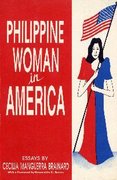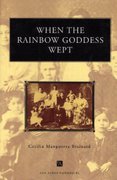 There is in Old Cebu a historic site tucked away in the Parian District of Cebu City, like a secret gem waiting to surface one day. It is an old Jesuit House or Convent built in 1730. Located on Zulueta Street near Mabini, this historic site has not been restored and is currently the Ho Tong Warehouse. But in the midst of the piles of steel and lumber, one can find vestiges of this ancient place. It is surprising but tourists from all over the world seek out this place, asking permission from the Ho Tong employees to see what is left of the place; the Ho Tong people generously oblige.
There is in Old Cebu a historic site tucked away in the Parian District of Cebu City, like a secret gem waiting to surface one day. It is an old Jesuit House or Convent built in 1730. Located on Zulueta Street near Mabini, this historic site has not been restored and is currently the Ho Tong Warehouse. But in the midst of the piles of steel and lumber, one can find vestiges of this ancient place. It is surprising but tourists from all over the world seek out this place, asking permission from the Ho Tong employees to see what is left of the place; the Ho Tong people generously oblige.The history of the Jesuits in Cebu is fascinating. The Jesuits, also known as the Black Robes, came to the Philippines in 1581. By 1595, the Jesuits were in Cebu.
It was the Jesuit superior, Antonio Sedeno himself who founded a house in Cebu. Sedeno was a veteran missionary of 46. Like St. Ignatius, he had been in the military when he was young. He had gone to England as a page of the Duke of Feria when Mary Tudor was queen. On March 13, 1568, he sailed for Florida with a group of Jesuits headed by Juan Bautista de Segura. In 1572, Sedeno was the first Jesuit sent to Mexico, and it was while he was acting Rector of the college there that he was informed he was chosen as superior of the first Philippine Mission. Traveling with three companions, he sailed from Acapulco on the galleon San Martin on March 29, and arrived Manila in July. There Sedeno and his company learned Tagalog. After much hemming and hawing as to whether the Manila Jesuits would head the entire Far East or the Philippines, and as to what type of work they would actually do there, the King of Spain sent an order for the Jesuits to establish a Jesuit College where they would teach not only Spanish boys but also mestizos and sons of the ruling class.
 Cebu, the site of the first Spanish settlement was not forgotten, and by June 30, 1595 Sedeno himself headed a small group composed of Alonso de Humanes, Mateo Sanchez and a lay brother to Cebu for the purpose of founding a Jesuit house there. The people received them warmly and promptly donated 500 pesos to them, which they used to buy a house near the beach. The city corporation donated adjacent land for a yard and garden. The trip to Cebu had been on an uncovered sailboat, exposing the Jesuit passengers to the stormy weather for three weeks. Father Sedeno became ill and passed away in Cebu on September 2, 1595. They buried him in the domestic chapel on the ground floor of their first house, but three years later, Father Pedro Chirino transferred Sedeno’s remains to the new Jesuit church.
Cebu, the site of the first Spanish settlement was not forgotten, and by June 30, 1595 Sedeno himself headed a small group composed of Alonso de Humanes, Mateo Sanchez and a lay brother to Cebu for the purpose of founding a Jesuit house there. The people received them warmly and promptly donated 500 pesos to them, which they used to buy a house near the beach. The city corporation donated adjacent land for a yard and garden. The trip to Cebu had been on an uncovered sailboat, exposing the Jesuit passengers to the stormy weather for three weeks. Father Sedeno became ill and passed away in Cebu on September 2, 1595. They buried him in the domestic chapel on the ground floor of their first house, but three years later, Father Pedro Chirino transferred Sedeno’s remains to the new Jesuit church. The Jesuits went on and founded a free primary school that taught Spanish, Visayan, and Chinese students Catholic doctrine, reading, writing, arithmetic, and deportment. Grammar was added upon the Since 1596, the Jesuits had been administering a free primary school teaching Spanish, Visayan, and Chinese students Christian doctrine, reading, writing, arthimetic, and deportment, grammar.
In 1599 the Chinese Christians built a Catholic church in the wealthy Parian district in Old Cebu. This church was said to have been decorated with gold and silver. The Bishop of Cebu ordered the Jesuits to administer this church, which they did for a while. This was the Parian Parish church that stood at the intersections of Mabini, Espana, and Zulueta. The Jesuit convent was across the street on Mabini and Zulueta.
When the Jesuits were expelled from the Philippines in 1768, the Jesuit House in Cebu ended up in the hands of others, including the Alvarez and Sy families. At some point, it had even been exclusive club in Cebu.
Here are some pictures of Cebu's Old Jesuit House of 1730, including the cut-coral wall. Here's a great link to Arnold Carl's site. Arnold has a great writeup about the architecture of this Old Jesuit House and more pictures and writeups about Old Cebu sites.

~~~~~
A lot of the information above about the Jesuits came from the Book by Father Horacio Dela Costa, The Jesuits in the Philippines.



























No comments:
Post a Comment